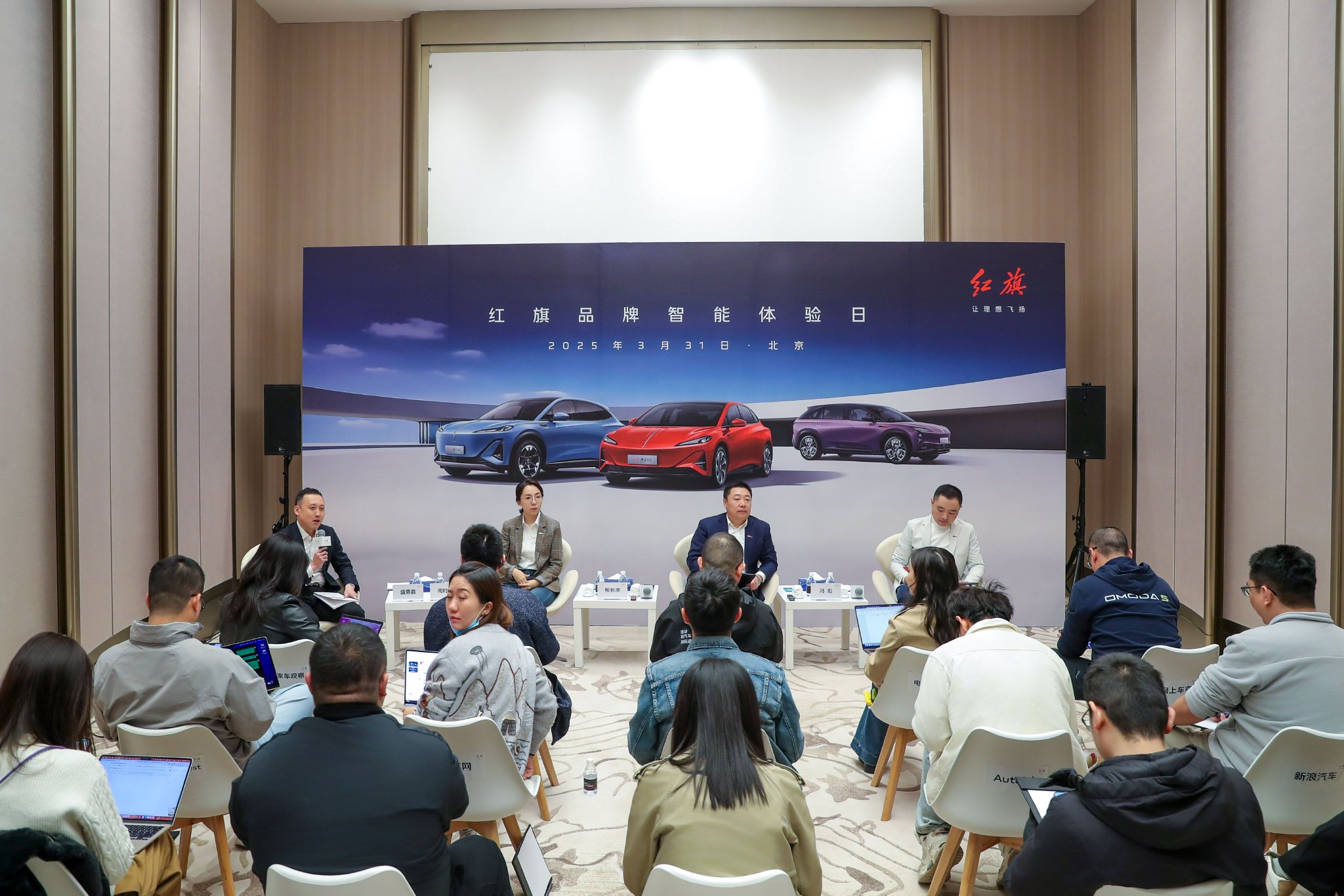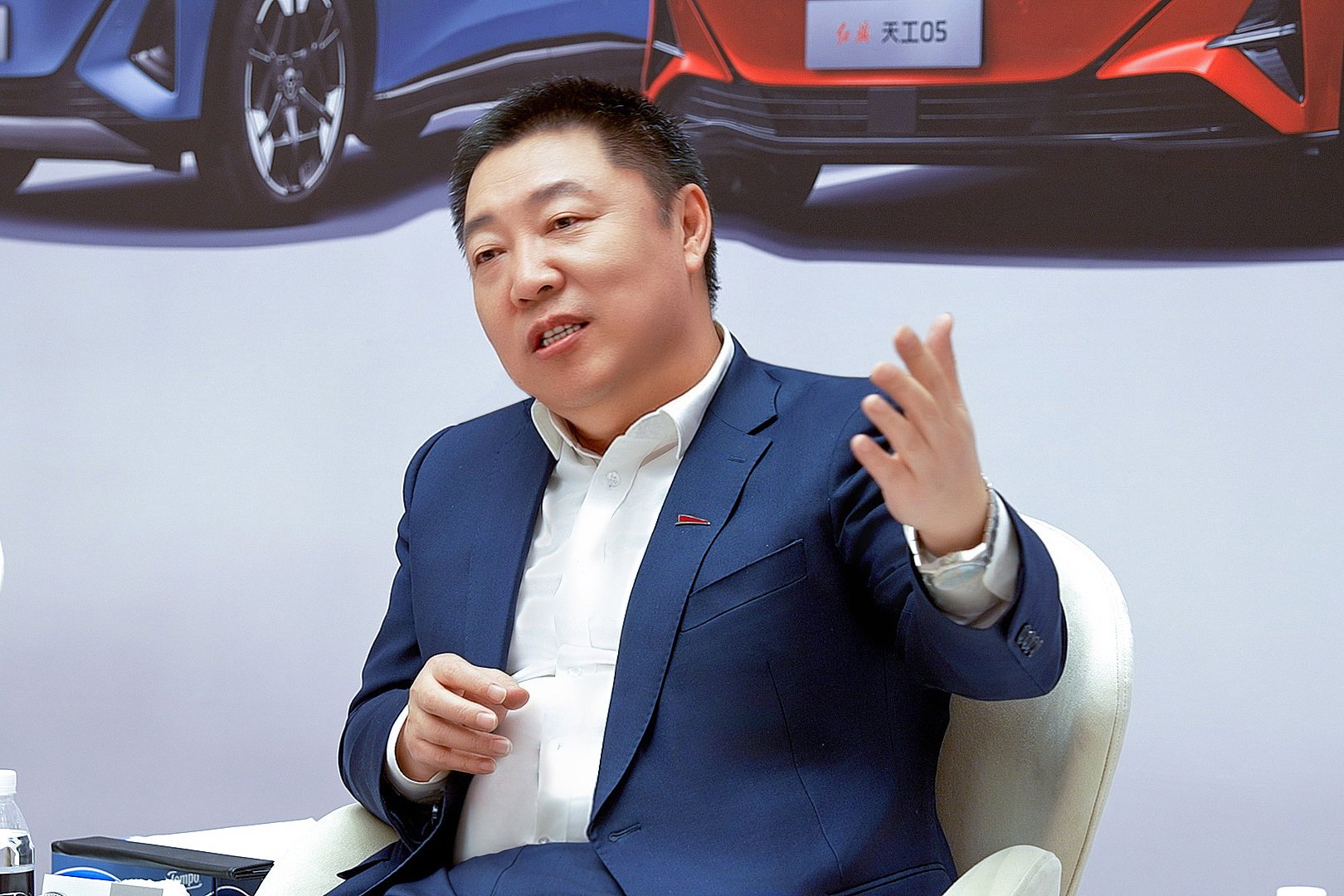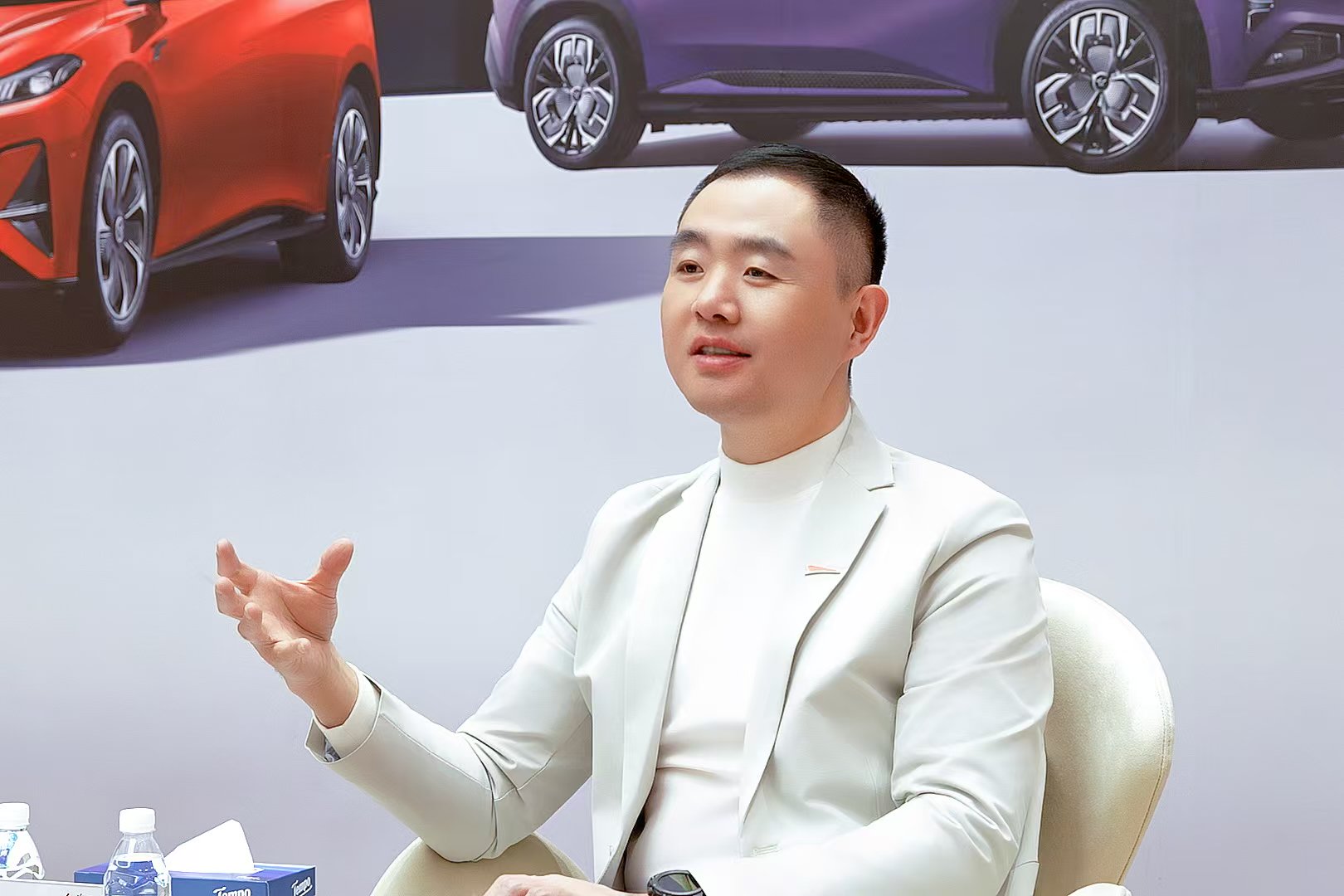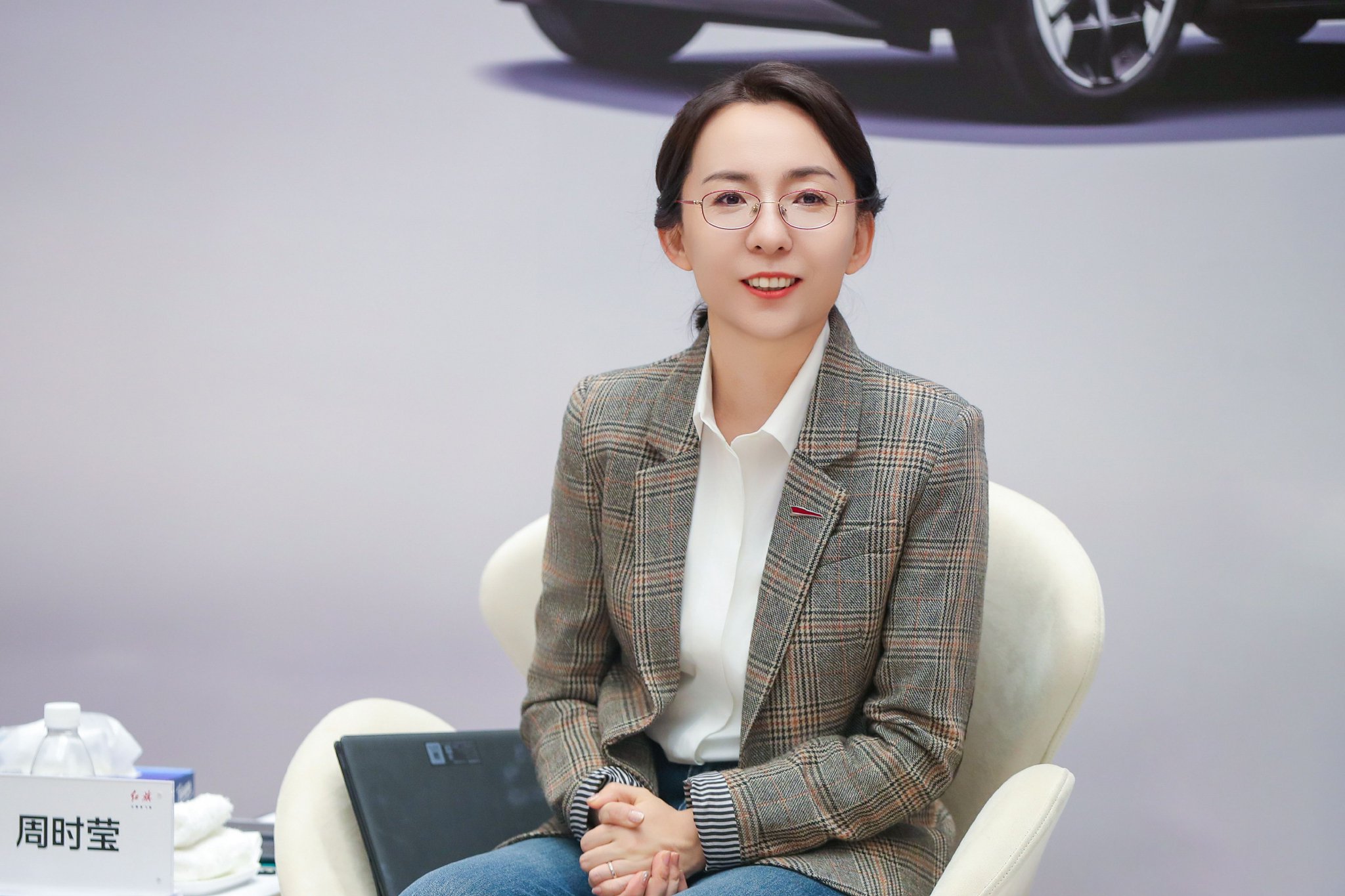On March 31, the Hongqi brand held an intelligent experience day at the Beijing Capital International Conference Center. After the event, Hongqi leaders answered media questions. Q: This year, many have held various strategic meetings on intelligent driving. However, we named today’s event an experience day. What special meaning does this have? Liu Changqing: Since entering 2025, “intelligent” has become a buzzword in the automotive industry. Everyone discusses intelligent driving. What makes Hongqi’s approach to intelligent driving different? This is a question we have been considering.
Last November, we held the New Energy Night for the Hongqi brand in Shenzhen. We introduced the Tiangong and Jiuzhang platforms for the first time. We shared Hongqi’s achievements in electrification and intelligence at that point. This event also set our goals and direction for the next phase. Six months later, we have launched mass production technologies and products. We have delivered them to the market. We want to provide experiences for everyone to see, feel, and try. This time, we will speak less and let everyone see and experience more. We positioned this event as “Experience Day.” Hongqi showcased available products for direct communication. We focused on experience. The Experience Day also brought Hongqi closer to users and media. At the event, we created many parking scenarios. We simulated extreme parking situations comprehensively. We are the first to do this. With the Tiangong 05, we surprised everyone. They realized that the pure electric products of the Hongqi Tiangong family are impressive. Many still had old impressions of Hongqi products, but that changed instantly. We will reinforce this with the Tiangong 06. Through this pair of platforms, we aim to provide a new understanding of Hongqi’s intelligence and smart driving through real vehicle experiences and practical scenarios. Hongqi has available products, and our smart driving and intelligence have indeed progressed. Q: Mr. Feng mentioned an interesting point that smart cars do not equal good cars. I would like your thoughts on this perspective. Also, as a fan of Sun Yingsha, I found this collaboration great. Could you share your thoughts on this partnership?
Feng Biao: As intelligence becomes more common in the automotive field, consumer choices have changed. In the past, buyers focused on the “three core components” and safety. Now, they consider features like city NOA, large screens, and voice control. This focus is valid. It reflects automotive progress and the evolution toward intelligence. However, we must remember that cars are primarily transportation tools. Consumer electronics do not bear the responsibility for personal and family safety. Cars do. This fact is undeniable. Therefore, while we should pay attention to intelligence, we must not overlook safety. Safety must see continuous improvement. Intelligent features should enhance safety for lasting stability. We want to promote this idea. We hope consumers consider these factors when choosing cars in the intelligent connected era. Liu Changqing: During Hongqi’s transition to new energy, the user base is becoming younger. Users aged 25 to 35 now make up one-third of Hongqi’s customers. What do these 25 to 35-year-olds care about? What values influence their choices? Based on these considerations, we see Sun Yingsha as an outstanding representative of national sports. Her excellent achievements align with the uplifting spirit she embodies. This matches the Red Flag brand’s tone. Red Flag strives to keep pace with the times. We chose Fu Hang as the Passion Ambassador for Tiangong 05 because he represents vitality, confidence, and hard work. He exemplifies how to change one’s destiny through effort. His appeal to the youth aligns well with the target audience of Tiangong 05. Red Flag’s marketing innovation aims to make the new generation “fall in love with national cars and have Red Flag in their hearts.” We want to “make friends” with young users in this new context. Red Flag has weathered many storms but remains youthful. Whether we choose Fu Hang or Sun Yingsha, Red Flag aims to create a concept of eternal youth. The brand always strives for progress. This focus on upward development is the core of Red Flag’s identity. Q: Today, I saw Sinan Smart Driving categorize by 100, 500, and 1000. What considerations went into this classification? Zhou Shiying: We divided it into three main sections. We have five levels. First, let’s discuss the three main sections. The Sinan 100 starts with the NOA function. It offers a high safety factor. We added ten memory routes for urban areas. Each route is 100 kilometers long. You can drive freely on them. The Sinan 100 serves as an entry point for users. They can experience our current capabilities for a low cost.
We have advanced to a new level with the Si Nan 500. This model includes features that cover entire urban areas. We offer both a pure vision version and a lidar version. These configurations leverage the cost advantages of pure vision while also addressing the design limitations of lidar on the roof. Hongqi has vehicles priced from 200,000 to over 1 million. Many customers prefer not to have lidar on the roof. Other brands cannot provide this option, but Hongqi can. If you want lidar, we offer a high-resolution version with 128 laser lines. Our algorithm uses a dual approach to deliver two standard urban configurations for you to choose from, applicable across different vehicle series. Next, we have the Si Nan 1000. Hongqi started its journey in intelligent driving back in 2014, initially working on L4 systems. FAW, which owns Hongqi, also produces the Jiefang brand for commercial vehicles, achieving autonomous driving in that sector. Our technology framework is unified. The Si Nan 1000 comes standard with L3 capabilities for highways and urban areas. The high-end version can achieve fully autonomous driving, equipped for future road trips and road buses. We may also integrate a large language model for the cabin. I believe the 1000 series is our standard offering. We are also working on more sensor configurations, with a maximum of eight lidar units for autonomous solutions. We have embedded computing power, allowing for future expansion. We target short-distance cargo transport and future public transit, incorporating vehicle-road-cloud integration. We can also develop single-vehicle intelligence. Each level of our technology and product offerings is strategically planned, including pricing. Most of what I just mentioned is already available and in development. Q: Mr. Liu, Hongqi now has three models. At this stage, can you summarize the current phase of Hongqi’s new energy strategy and share your feelings about Hongqi’s progress? Liu Changqing: As one of China’s earliest independent passenger car brands, Hongqi has made progress in energy-saving vehicles over the past few years. However, new energy represents a completely new track for Hongqi. This challenge remains significant. In last October’s New Energy Night, after the Smart Experience Day, we will launch Hongqi’s new PHEV at the Shanghai Auto Show and in the fourth quarter of this year. We will take actions to inform the media, users, and industry that Hongqi not only upholds its brand but also continuously develops in the new energy sector. We hope Tian Gong, as Hongqi’s pure electric product line, gains recognition and acceptance from more users. This depends on how we create an excellent product that delivers an ultimate experience on this platform. We aim for the Hongqi brand to play a role in clarifying industry standards. Smart features are gaining popularity, but cars need more than intelligence. They require depth and must adhere to their own growth and development principles. We want Hongqi’s new energy to combine these fundamental elements with the latest technology, providing FAW with future-oriented strength. We plan to reach the forefront within 2-3 years, excelling in multiple dimensions. This relies on the competitiveness of our three major platforms, such as technological foresight, exceptional performance, cost competitiveness, reliability, and safety. This process will transform us and requires hard work day and night. We need substantial effort to achieve a promising future and continuously surprise everyone. Hongqi is indeed moving rapidly. Q: Today, we explored many parking scenarios. What values guide Hongqi’s smart driving R&D? What comes first and what follows? I’m interested in the smart driving insurance we released. Can you discuss the subsequent operations and detailed plans? Zhou Shiying: First, smart driving must be usable for ordinary users. Many users feel threatened in dangerous situations, like when changing lanes or when a car suddenly accelerates behind them. If they experience more than two alarming situations, they might hesitate to reactivate the feature due to their psychological state. From our perspective, we must ensure that ordinary users feel safe and confident using it. Secondly, smart driving must have room for continuous improvement. It’s not enough to release a version and consider it the peak. We must constantly elevate its technological capabilities. Based on these points, our technical approach is clear. Our tech team follows the latest technological insights. We search for foreign AI papers and conduct various experiments. We seek truth and precision. We draw advanced techniques from top journals and models. I believe that smart driving is a steady process. It cannot rush. Many say technology updates every two to three years. They think they can replace a group of people to get the latest innovations. I argue that the departure of those people takes away not just their knowledge, but possibly the entire technical architecture and safety system. In the product development process, we focus on intelligent safety. In our smart driving team, about 10% are product managers for smart driving. The safety team makes up 10% to 20%. They develop models for safety architecture, standards, software, and hardware. Our safety team also writes code. In the final stages, we conduct simulations and real-time road response validations. This solid foundation increases our chances of success. Regarding the smart driving insurance issue, I want to share my understanding. The collaboration between FAW Hongqi and Ping An Property & Casualty Insurance for smart driving insurance is based on “two respects and two capabilities.” The first respect is for technology. From a product practice perspective, technology has limits. No AI or smart system can be infallible. As I mentioned, cars cannot afford to be error-free; the consequences are unbearable. Therefore, we must respect technology. The second respect is for users. We hold great respect for user safety and property security. We also value the word-of-mouth reputation that arises from this. The first capability is our vehicle’s foundational ability. During the smart driving process, we must monitor the status of our five major controllers and ensure real-time communication. Each controller must record its internal processing status. Without this, we cannot understand the reasons or context of incidents afterward. The second capability is the state-owned enterprise’s capability. Smart driving insurance is a new business created by the insurance industry and car manufacturers. It requires exploration. The insurance industry values the strength and integrity of car companies. The Hongqi brand, as a state-owned enterprise, embodies this integrity and strength. Therefore, partners in insurance are eager to collaborate with us to develop new business models. To purchase “smart driving insurance,” buy the Tiangong 05 or reserve the Tiangong 06, and you will receive the insurance as a gift. Q: Mr. Feng mentioned the importance of misuse safety testing. I believe this is crucial, especially for the Tiangong series. It reflects the social responsibility of a major state enterprise. In specific scenarios and environments, vehicle safety and the safety of traffic participants become even more important. I would like Mr. Feng and Dr. Zhou to discuss the thoughts behind misuse testing. Thank you. Feng Biao: Introducing the concept of misuse prevention is fresh for the industry. However, for Hongqi, it has been a continuous development focus. Over a decade ago, when I worked as a design engineer in the technical development team, we considered user misuse scenarios. The development standards at FAW included this consideration. It has been deeply embedded in the design, specifications, and standards of our components and subsystems. Misuse scenarios exceed standard usage conditions. They involve users imposing higher demands on the products. We believe consumers may encounter these misuses. To be responsible to users, we raised certain functions and indicators in our development standards. Each component subsystem reflects this. For example, consider the design of our car interior door trim. Everyone knows the door has a handle. We design that handle with strong structural integrity. Below, there is a water drainage storage area, referred to in engineering terms as a “thin wall.” When designing this component, we considered the possibility that a user might pull on that storage area when closing the door. The thin wall is not meant to function as a handle. While the handle above is strong, the storage area below is a delicate thin wall. If we do not design it robustly enough, pulling on it could damage the thin wall. When we designed the wall map, we considered misuse scenarios. The personnel sit inside and simulate adult hand strength and speed. For example, our chassis, electrical systems, interiors, components, and subsystems all cover this. It is not just an independent system like a five-star crash test. Each part and subsystem within the vehicle plays a role. This is why our car design includes elements not listed in the configuration table. When selecting a car, we must not rely solely on the configuration table. Today, I present this concept not to spark a trend, but to clarify that a smart car does not equal a good car. Some aspects are like an iceberg; what lies beneath the surface is often crucial. I thank General Feng Biao. He is an excellent product manager. He instills rigorous development standards in every engineer and component. Since I started working here, I have followed these requirements. We have standards for conventional components, structures, software, hardware, and DFMA. We adhere to these standards in our processes. Today, I want to show our true form to reassure consumers. As a software student, I emphasize this: electronic and software elements will always have bugs. The Earth may not exist, but software bugs will persist. At Hongqi R&D, we believe vehicle failures arise from two causes. The first is faults in our components. The second is mismatches between user behavior or external conditions and our design standards. From the initial CAD 3D design of parts to tooling and fixture production, we follow automotive regulations. We conduct various reliability, durability, vibration, and temperature tests. I believe 99.999% of parts will not fail as long as we produce according to standards. Now, with the introduction of intelligence, we cannot expect every user to be standardized. If you give a user a screen, will they operate every page correctly? In a crash, will they accidentally trigger something? I might want to turn on the air conditioning, but the seat adjustment is right there. At the Hongqi R&D Institute, we conduct comprehensive testing from front-end CAE simulation to various tests. We assign four engineers for every experimental team. The engineers’ results require thorough validation by the experimental team. In validating the intelligent driving system, we use cloud-based big data simulation, HIL, and DIL tests. We combine these with reliability road tests, covering hundreds of thousands of kilometers in diverse environments like cities, plateaus, mountains, and coastal areas. During testing, engineers and experimenters perform routine operations and assess user experience. They evaluate usability and ergonomic design. For example, they consider how to prevent mis-triggering due to adjacent button layouts during user operations. Based on this data, we optimize the hardware and software design. We ensure that even in cases of misuse, the system maintains safety and prevents accidents. Q: Two questions. First, the Tian Gong 06 starts pre-sales today. In a competitive market around 200,000 yuan (27470$), what are its differentiated competitive advantages? Second, it seems Hongqi is undergoing a renewal process. As a high-level brand in the group, this renewal might be challenging in product planning, technological iteration, and overall corporate strategy. What innovations might arise? Feng Biao: Let me start with the Tian Gong 06. What makes it different in a crowded market? I believe the first advantage is intelligence. The Tian Gong 06 achieves top industry advantages in both the cockpit and intelligent driving. We rank among the absolute top tier in the industry. However, achieving this is not truly differentiated, as others do the same. All good products have good intelligent driving, leading to a tie. Yet, in terms of intelligent driving and the foundational support for it, we adhere to the national car manufacturing philosophy. Whether regarding safety, handling, or protecting rights, we present elements not seen in the competitive landscape. If others have similar offerings, we can compete and believe we can still win. Liu Changqing: Regarding product coverage and the breadth of market segments, our products range from 150,000 to 7 million yuan. No other brand in the world has such a wide product coverage. We are currently refining the new structure of the Hongqi brand. We welcome suggestions from media friends. One thing is clear: we have a clear vision for the Hongqi Jin Kui Hua product line. We aim to position it as Hongqi’s top luxury brand, targeting prices above one million. The Hongqi Guo Ya starts at 1.4 million, and the Guo Li starts at 7 million. With special customizations, it could reach tens of millions. In addition to Jin Kui Hua as Hongqi’s top luxury sub-brand, our product range will cover market values from 150,000 to nearly one million. In terms of powertrains, Hongqi offers energy-efficient vehicles, plug-in hybrids, and pure electric options. Our brand renewal focuses on delivering products that provide exceptional value. Technology plays a crucial role. If our technology leads the way, it will enhance the user experience and support our brand’s premium positioning. Hongqi stands at the best time. National and cultural confidence is strong. Users aged 25 to 35 make up one-third of our customer base, exceeding our expectations. This shows young people view Hongqi as China’s premier independent brand. We aim to make Hongqi more appealing to them. In the new energy sector, we must communicate effectively with users. We want our technology to be unique and at the forefront of development. Many discussions arise about how many brands China can support. I believe if only one brand remains, it should be Hongqi. This belief stems from Hongqi’s responsibility and mission since its inception. We must strive to make this brand exceptional. I hope everyone promotes and supports Hongqi. In five or ten years, Hongqi will reach new heights. Hongqi will not only represent the Chinese people; we dream of making it a global symbol. In five or ten years, we will reflect on our journey as automotive professionals. We may leave the front lines of work, but we will remember the brands we supported and witnessed grow. If we help Hongqi become a source of pride for China, our pride, happiness, and sense of achievement will increase significantly. We, the Hongqi team, will keep striving. However, our efforts alone are not enough. We hope the media present will join us in providing positive energy for this brand. No brand is perfect. When I first joined Hongqi, the chairman organized a major discussion. I had the honor to represent the executives in 2017. I said that Hongqi is not perfect, but I am willing to grow with it. We feel a strong sense of responsibility and mission. We tread carefully to ensure we succeed in this endeavor. The challenges are significant. Look at the century-old brands like BBA and their performance in the new energy vehicle sector. This illustrates our difficulties, yet we remain confident about the future. Q: I want to ask about the cockpit. Will the cockpit, like intelligent driving, become a competitive race in software and hardware? What will future development look like? Zhou Shiying: Our teams intertwined three years ago. The intelligent driving and cockpit teams share similar technical logic. From product definition to software, OS, and hardware, these teams are getting closer. Look at the strategic direction of chips. Qualcomm, originally focused on in-car and mobile communication, and Nvidia, focused on image processing, are both entering this space. Many domestic high-process chip companies are doing the same. The cockpit and intelligent driving teams are developing their own models. The intelligent driving model is primarily based on vision and the Transformer architecture. Over the past two years, the cockpit has integrated large language models, enhancing environmental perception and natural language understanding. At the same time, we see more companies capable of making in-car brain control chips. The intelligent driving team says they can handle the cockpit, while the cockpit team claims they can integrate parking assistance. I said, let’s stop arguing and create a fusion. It used to have a barrel shape. Now, we focus on integrating the OS and hardware into a centralized computing platform for vehicles. This platform acts like an AI brain. It can quickly process information from Android, CUDA, and our software architecture. We have solid hardware logic to support this. We have already begun building this substantial computing platform. The intelligent driving team can easily incorporate VLM and VLA into our large model. The existing logic architecture supports this integration. If these two teams want to merge, they must align their scale and technical structures. Right now, teams that don’t pursue humanoid robotics in intelligent driving may not be effective in cabin integration. Our ultimate goal is to create a system similar to Transformers. We have built a digital foundation. Above that, we train a comprehensive brain. I want to discuss more than just cabin integration. Our powertrain and chassis must also integrate fully. We need to perceive the surrounding world like the human brain. We must create a three-dimensional map and make decisions on the next steps. To achieve humanoid robotics, our intelligent cockpit, powertrain, and chassis must work together seamlessly. My large model is comprehensive. I feed it data beyond just intelligent driving perception. I include driver psychology, expressions, language ability, the latest traffic regulations, safety standards, and current vehicle conditions. This includes the operation of the motor and battery power. After this targeted training, the output will be an integrated vehicle control system. Host Sheng Yongxin: Thank you to all the media for your time tonight. Today is March 31st, as mentioned in the press conference, a highly competitive month. Today, Hongqi brand presents the Hongqi Smart Experience Day. Our experience and release should be sincere and genuine, reflecting our motto: “Intelligence reveals the truth, safety has its limits.” Tomorrow is April. We wonder how the market will respond and how many press conferences will occur. We will launch many marketing actions and major products under the Hongqi brand. We just released the Tiangong 05 and 06 for user media test drives. We will also introduce the H5, our best-selling B-class car, with a super hybrid PHEV version. At the Shanghai Auto Show, we will share significant updates. We hope the media will continue to pay attention to the Hongqi brand. Thank you all.



